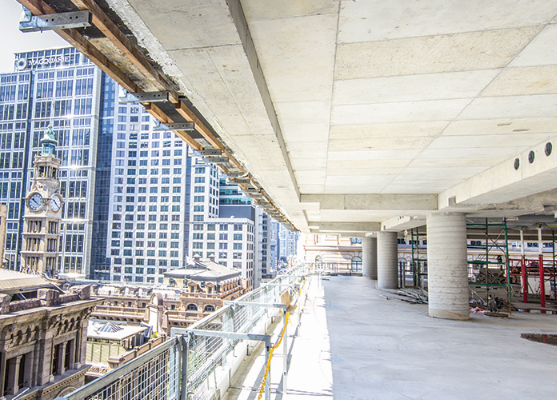Research collaboration pushes the boundaries of low-carbon concrete technology
A new manufacturing research project brings together industry technology and engineering experts from Boral, the University of Technology Sydney (UTS) and Southern Highland Concrete Constructions to develop advanced technology for manufacturing, placing and curing novel ultra-sustainable concrete in Australia.
The two-year project is co-funded by Boral and the Innovative Manufacturing Cooperative Research Centre (IMCRC) with both organisations investing $770,000 into the research as part of an overall $6m investment. The project aims to overcome current technological barriers of low-carbon concrete manufacturing and accelerate the development of Boral’s lower carbon ENVISIA® concrete.
Boral General Manager – Innovation Development, Dr Louise Keyte, says that ENVISIA® already performs as well as conventional concrete while containing a sizable cement replacement, achieved through the inclusion of alternative binders.
“Our ambition, through the collaboration with UTS and Southern Highland Concrete Constructions, is to accelerate our research into new binders and develop the next generation of ENVISIA® concrete. We want to push low carbon boundaries even further while maintaining the practical properties of regular concrete.”
Low-carbon concrete uses supplementary cementitious materials (SCMs) such as ground granulated blast-furnace slag, fly ash and calcined clay as binders, instead of ordinary Portland cement (OPC). OPC is a major contributor to carbon emissions after fossil fuels.
To date, the percentage of SCM in low-carbon concrete products has been limited to 50% to ensure blended cement concrete meets set workability, durability and strength requirements without demanding specialised high-temperature curing schemes or the use of highly alkaline activators.
The project team led by UTS’ Professor Vute Sirivivatnanon combines UTS academic knowledge with the experience of Boral’s innovation team.
“Our aim is to push the technological boundaries of binder and chemical admixture technology and lift the maximum replacement rate of OPC while maintaining the fresh and early hardened properties of concrete for optimum construction efficiency. In addition, all durability properties critical to the achievement of design life for concrete structures will be optimised to deliver truly sustainable building.”

